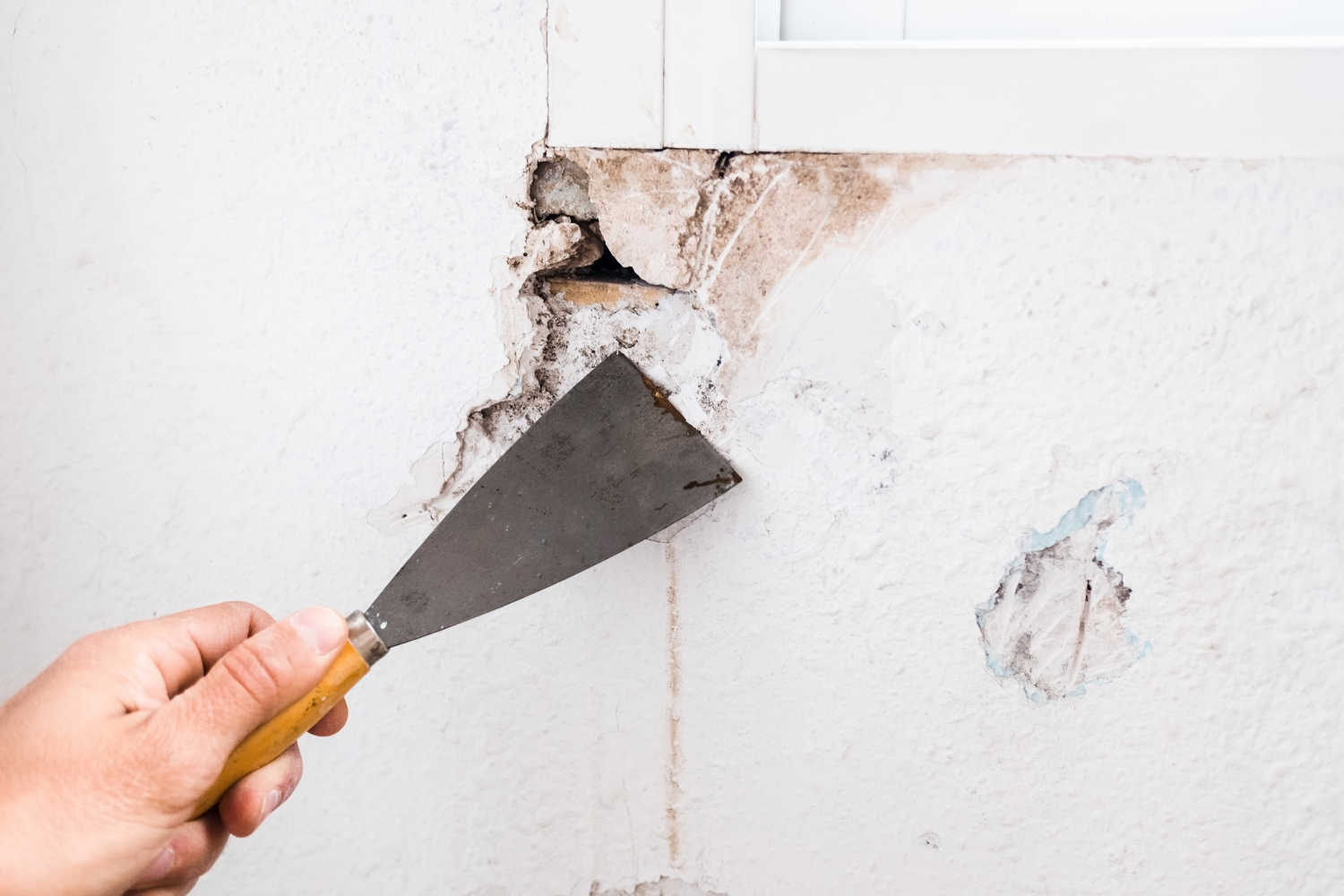Call This Sunday to Get $25 OFF
Hire a Day Handyman for $1250
Call This Sunday to Get $25 OFF
Hire a Day Handyman for $1250
Cracks in your drywall can be more than just a cosmetic concern, they might signal underlying structural issues, changes in your home’s foundation, or simply natural aging of the materials. No matter the cause, noticing cracks in your walls or ceiling can leave you wondering if you need a simple touch-up or a complete drywall replacement. Understanding the different types of drywall cracks, what causes them, and how to fix them is key to maintaining your home’s appearance and integrity.

In this blog post, our professionals from Mr. Handyman will explore what cracks in drywall really mean and how to determine the best course of action for drywall repair.
Hairline cracks are the most common type of drywall damage and usually appear in high-stress areas such as doorways, windows, or corners. These cracks are often due to minor settling of the home or fluctuations in temperature and humidity. While they are not typically a structural concern, they can still be unsightly and may continue to grow over time if left unattended.
Hairline cracks can usually be addressed with a straightforward drywall repair. This involves applying a joint compound to the crack, sanding it down smoothly after it dries, and finishing with paint to match the surrounding wall. For the average homeowner, this is a manageable DIY task, but if the cracks keep returning, it might be time to call in a professional to assess whether a deeper issue is causing the damage.
Vertical cracks that run straight up and down your walls might indicate natural settling of your home over time, especially in newer constructions. These types of cracks generally appear within a few years after a home is built and are not always cause for alarm.
Hire Half a Day Handyman for $650
Limit One Per Customer. Not Valid With Any Other Offer. For first-time customers only.
PrintHire a Day Handyman for $1250
Limit One Per Customer. Not Valid With Any Other Offer. For first-time customers only.
PrintGet $25 Off Door Repair & Replacement
Limit One Per Customer. Not Valid With Any Other Offer. For first-time customers only.
Print$25 OFF Your First Service
Get $25 off any handyman service today. Limit One Per Customer. Not Valid With Any Other Offer. For first-time customers only.
PrintHowever, if the cracks are wide or increasing in size, it’s important to investigate further. In some cases, they may be symptoms of foundation issues, especially if you also notice cracks in other parts of the house such as ceilings, floors, or exterior walls. If you suspect that settling is not the only cause, consult a contractor or structural engineer before beginning any drywall repair. They can determine whether drywall replacement or additional structural work is needed.
Horizontal cracks are usually more serious than vertical ones. They often indicate stress caused by structural shifting or foundational pressure. These cracks can result from water damage, soil movement, or aging materials within the home’s framework. If you see horizontal cracking, particularly in your basement or lower levels, don’t ignore it.
This type of damage might require more than a simple drywall repair. In many cases, the drywall itself is no longer structurally sound and will need to be removed and replaced. A professional drywall replacement will guarantee that the new surface is safe, stable, and properly installed to prevent future problems.
Cracks in the ceiling are another type of drywall issue that should be taken seriously. If you see spiderweb cracks or long lines running across your ceiling, this could point to issues like excessive weight above, settling, or hidden water leaks. Water damage is especially concerning as it can weaken the drywall over time and lead to mold growth.
The decision between drywall repair and drywall replacement in Hendersonville, TN depends on the severity and cause of the cracks. Minor cracks can often be patched up with a little joint compound and sanding. But if you’re dealing with multiple or recurring cracks, moisture damage, or structural concerns, replacing the drywall may be the best option to ensure long-term stability and safety.
Drywall replacement involves removing the damaged sections entirely and installing new sheets of drywall, which are then taped, mudded, and painted. Though it’s a more involved and costly process, it provides a clean slate and makes sure that any underlying issues have been properly addressed.
Are you in need of a drywall repair or replacement? Luckily, we at Mr. Handyman have dedicated workers ready at your service. Contact our representatives for more questions.
Your ceiling might not be the first thing you notice when walking into a room, but it plays a huge role…
Read MoreWindows play a crucial role in keeping your home comfortable, energy-efficient, and visually appealing. Over time, however, they can develop issues…
Read MoreDo you want to install new shelves in your home? If so, it may be best to consider where is best…
Read MoreAs we transition from cold weather to warmer spring temperatures, homeowners often prepare for their annual cleaning routine. While decluttering closets…
Read MoreAutomatic gates add convenience, security, and style to your property. Whether you have a sliding gate or a swing gate attached…
Read More